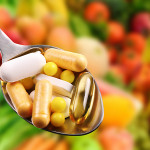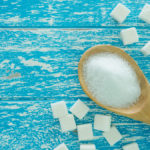By David Blyweiss, M.D., Advanced Natural Wellness
My patients often ask me about the benefits of one trendy supplement or another that’s been in the news. And while some, like vitamin D or green tea, can offer a wealth of healthy benefits, you shouldn’t ignore tried and true nutrients that aren’t getting press.
One essential nutrient that hardly gets any attention these days is vitamin A. It’s one of the basic vitamins that works on many levels to ensure good health. Yet, more than half of us aren’t getting enough on a daily basis.
While you might get some vitamin A in your multivitamin, it’s likely not enough to fill all the needs your body has for this powerful antioxidant nutrient. Here are just some of the ways vitamin A keeps you healthy:
- Guards against night blindness. One of the classic signs of vitamin A deficiency is night blindness. It’s characterized by difficulty seeing in the dark or being momentarily blinded after looking into glaring lights like oncoming headlights.1 Most serious eye diseases, including cataract, macular degeneration, and glaucoma, are linked to low vitamin A levels.
- Protects against cancer. Vitamin A protects against many types of cancer, especially breast, skin, lung and ovarian cancer. Studies show that vitamin A prevents DNA from growing in cancer cells.2 It also slows the growth of tumors.
- Boosts immunity. Because vitamin A keeps your mucous membranes moist, it prevents bacteria and viruses from taking hold. It’s especially good at combating measles, respiratory viruses, and even HIV, the virus that causes AIDS.
- Helps maintain younger-looking skin. Vitamin A helps keep skin moist and fights the free radical damage that can lead to wrinkles.
You can boost the amount of vitamin A you’re getting by eating the right foods.
But don’t reach for the carrots. Carrots, pumpkin and other orange, red and yellow fruits and vegetables are terrific sources of beta carotene, a precursor to vitamin A. And while beta-carotene has many health benefits, recent research has found that many people’s bodies don’t easily convert it into vitamin A.3
The World's Quickest Solution for Ending Prostate and Urinary Misery
This has recently been revealed to be one of the only real breakthroughs in prostate health.
The seeds of a strange fruit (sometimes called "Chinese Apples") hold powerful phytonutrients that are a revolution in prostate health.
In fact, UCLA and Veterans Administration research have now proved this to be true.
Not only that, but it may be the worlds quickest solution for ending prostate misery.
Simply stated, these phytonutrients represent a huge step beyond beta sitosterol, saw palmetto, and other phytosterols alone.
Simply click HERE if you want to have fast prostate relief...restful, uninterrupted sleep...no more constant "urges to go"...enhanced virility...and optimal prostate support for life.
Making matters even worse, if the intestinal bacteria needed to convert beta-carotene is out of balance, you won’t make enough vitamin A. That’s why I always tell my patients who take beta-carotene to add a probiotic to their daily supplements. This helps keep their beneficial bacteria in balance.
So if carrots don’t provide vitamin A directly, what does? Liver, cheese, milk and eggs—not the foods you might think of.
Because most of these foods are high in saturated fat and cholesterol, you may not want to eat large amounts of them. Instead, I recommend taking 10,000 IU of supplemental vitamin A daily. But make sure you don’t take more than that without checking with your doctor first since high levels of vitamin A can be toxic.
References:
- Pitchon E. Night blindness, yellow vision, and yellow skin: symptoms and signs of malabsorption. Klin Monbl Augenheilkd. 2006;223:443-446.
- Bushue N. Retinoid pathway and cancer therapeutics. Advanced DrugDelivery Reviews. 2010;62:1285-1298.
- Burri BJ. β-Cryptoxanthin- and α-carotene-rich foods have greater apparent bioavailability than β-carotene-rich foods in Western diets. British Journal of Nutrition. 2011;105:212-219






